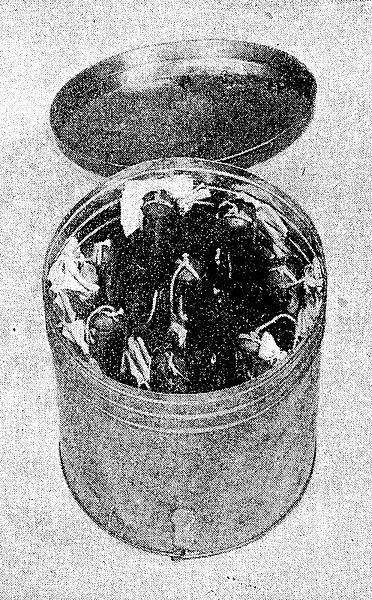Operation Outward was a British campaign of the Second World War that attacked Germany and German-occupied Europe with free-flying balloons. It made use of cheap, simple balloons filled with hydrogen and carrying either a trailing steel wire to damage high voltage power lines by producing a short circuit, or incendiary devices to start fires in fields, forests and heathland. A total of 99,142 Outward balloons were launched; about half carried incendiaries and half carried trailing wires.
Women's Royal Naval Service personnel launch Outward balloons at Felixstowe (1942–1944)
British military auxiliaries handle a barrage balloon.
Phosphorus bottles in container
Can of incendiary jelly
Fu-Go was an incendiary balloon weapon deployed by Japan against the United States during World War II. It consisted of a hydrogen-filled paper balloon 33 feet (10 m) in diameter, with a payload of four 11-pound (5.0 kg) incendiary devices and one 33-pound (15 kg) high-explosive anti-personnel bomb. The uncontrolled balloons were carried over the Pacific Ocean from Japan to North America by fast, high-altitude air currents, today known as the jet stream, and used a sophisticated sandbag ballast system to maintain their altitude. The bombs were intended to ignite large-scale forest fires and spread panic.
Fu-Go balloon bomb
Fu-Go carriage, with labeled ring, electrical circuits, fuses, ballast, and bombs
Top view of carriage assembly, with control device removed
Altitude control device, with central master aneroid barometer and backups








